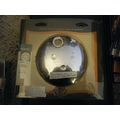Southwell Minster, Nottinghamshire - sculptured head - postcard c.1920s
- Condition : Used
- Dispatch : 2 Days
- Brand : None
- ID# : 125000689
- Quantity : 1 item
- Views : 523
- Location : United Kingdom

- Seller : justthebook (+1703)
- Barcode : None
- Start : Fri 28 Feb 2014 10:21:23 (BST)
- Close : Run Until Sold
- Remain : Run Until Sold
More Listings from This Seller view all
Seller's Description
- Postcard
- Picture / Image: Southwell Minster - shows a carved head
- Publisher: Alfred J. Loughton, Southwell
- Postally used: no
- Stamp: n/a
- Postmark(s): n/a
- Sent to: n/a
- Notes / condition:
Please ask if you need any other information and I will do the best I can to answer.
Image may be low res for illustrative purposes - if you need a higher definition image then please contact me and I may be able to send one.
------------------------------------------------
Postage & Packing:
UK (incl. IOM, CI & BFPO): 99p
Europe: £1.60
Rest of world (inc. USA etc): £2.75
No additional charges for more than one postcard. You can buy as many postcards from me as you like and you will just pay the fee above once. (If buying postcards with other things such as books, please contact or wait for invoice before paying).
Payment Methods:
UK - PayPal, Cheque (from UK bank) or postal order
Outside UK: PayPal ONLY (unless otherwise stated) please. NO non-UK currency checks or money orders (sorry).
NOTE: All postcards are sent in brand new stiffened envelopes which I have bought for the task. These are specially made to protect postcards and you may be able to re-use them. In addition there are other costs to sending so the above charge is not just for the stamp!
I will give a full refund if you are not fully satisfied with the postcard.
----------------------------------------------
Text from the free encyclopedia WIKIPEDIA may appear below to give a little background information (internal links may not work) :
*************
Southwell Minster /'s?ð?l/ or /'sa??w?l/[1][2][3] is a minster and cathedral, in Southwell, Nottinghamshire, England. It is six miles away from Newark-on-Trent and thirteen miles from Mansfield. It is the seat of the Bishop of Southwell and Nottingham and the Diocese of Southwell and Nottingham.
The earliest church on the site is believed to have been founded in 627 by Paulinus, the first Archbishop of York, when he visited the area while baptising believers in the River Trent. The legend is commemorated in the Minster's baptistry window.[4]
In 956 King Eadwig gave land in Southwell to Oskytel, Archbishop of York, on which a minster church was established. The Domesday Book of 1086 recorded the Southwell manor in great detail. The Norman reconstruction of the church began in 1108, probably as a rebuilding of the Anglo-Saxon church, starting at the east end so that the high altar could be used as soon as possible and the Saxon building was dismantled as work progressed. Many stones from this earlier Saxon church were reused in the construction. The tessellated floor and late 11th century tympanum in the north transept are the only parts of the Saxon building remaining intact. Work on the nave began after 1120 and the church was completed by c.1150.
The church was originally attached to the Archbishop of York's Palace which stood next door and is now ruined. It served the archbishop as a place of worship and was a collegiate body of theological learning, hence its designation as a minster. The minster draws its choir from the nearby school with which it is associated.
The Norman church was replaced with another in the Early English style in 1234 because it was too small. The octagonal chapter house, built in 1286 with a vault in the Decorated Gothic style has naturalistic carvings of foliage (the 13th-century stonecarving includes several Green Men). The elaborately carved ""pulpitum"" or choir screen was built in 1350.
The church suffered less than many others in the English Reformation as it was refounded in 1543 by Act of Parliament.
Southwell is where King Charles the First was captured during the English Civil War. The fighting saw the church seriously damaged and the nave is said to have been used as stabling. The adjoining palace was almost completely destroyed, first by Scottish troops and then by the local people, with only the hall of the Archbishop remaining as a ruined shell. The Minster's financial accounts show that extensive repairs were necessary after this period.
On 5 November 1711 the southwest spire was struck by lightning, and the resulting fire spread to the nave, crossing and tower destroying roofs, bells, clock and organ.[5] By 1720 repairs had been completed, now giving a flat panelled ceiling to the nave and transepts.
In 1805 Archdeacon Kaye gave the Minster the Newstead lectern; once owned by Newstead Abbey, it had been thrown into the Abbey fishpond by the monks to save it during the Dissolution of the Monasteries, then later discovered when the lake was dredged.[6] Sir Henry Gally Knight in 1818 gave the Minster four panels of 16th-century Flemish glass (which now fill the bottom part of the East window) which he had acquired from a Parisian pawnshop[7]
In danger of collapse, the spires were removed in 1805 and re-erected in 1879–1881 when the minster was extensively restored by Ewan Christian, an architect specialising in churches. The nave roof was replaced with a pitched roof[8] and the choir was redesigned and refitted.
Southwell Minster was served by prebendaries from the early days of its foundation. By 1291 there were 16 mentioned in the Taxation Roll.
In 1540 the prebends and minster were suppressed but an act of Parliament in 1543 re-established the college and church collegiate of Southwell. Under an Act of King Edward VI, the prebendaries were given pensions and their estates sold. The minster continued as the parish church on the petitions of the parishioners.
By an Act of Philip and Mary in 1557, the minster and its prebends were restored.[9] On 2 April 1585 a set of statutes was promulgated by Queen Elizabeth I and the chapter operated under this constitution until it was dissolved in 1841. The Ecclesiastical Commissioners made provision for the abolition of the chapter as a whole; the death of each canon after this time resulted in the extinction of his prebend. The chapter came to its appointed end on 12 February 1873 with the death of the Rev Thomas Henry Shepherd, rector of Clayworth and prebendary of Beckingham.[10]
type=printed postcards
theme=topographical: british
sub-theme=england
county/ country=nottinghamshire
number of items=single
period=inter-war (1918 - 1939)
postage condition=unposted
Listing Information
| Listing Type | Gallery Listing |
| Listing ID# | 125000689 |
| Start Time | Fri 28 Feb 2014 10:21:23 (BST) |
| Close Time | Run Until Sold |
| Starting Bid | Fixed Price (no bidding) |
| Item Condition | Used |
| Bids | 0 |
| Views | 523 |
| Dispatch Time | 2 Days |
| Quantity | 1 |
| Location | United Kingdom |
| Auto Extend | No |



 for 1 item(s)
for 1 item(s)







![ITALIEN ITALY [Verrechnung] MiNr 0010 ( O/used )](https://pic.ebid.net/upload_small/4/8/1/1548315926-31285-5.jpg)



